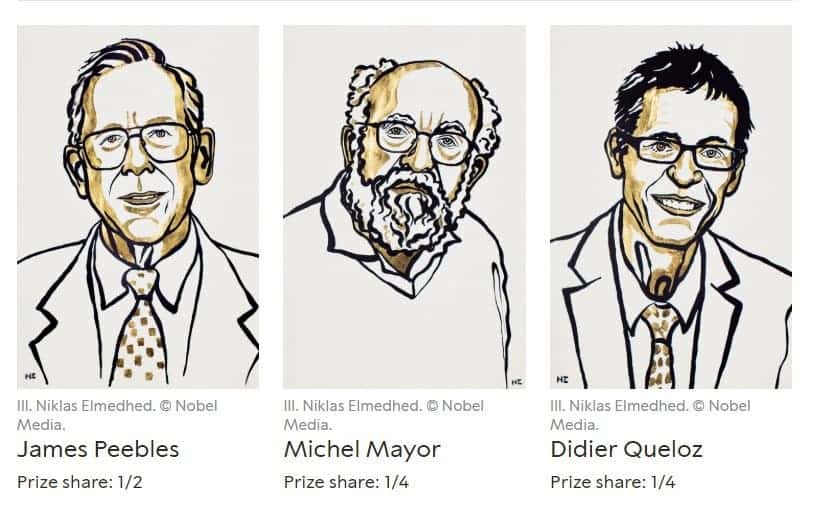The Nobel Physics Prize 2019 has been jointly awarded to James Peebles, Michel Mayor and Didier Queloz. Peebles received half of the prize “for theoretical discoveries in physical cosmology”, while the other half was jointly awarded to Mayor and Queloz “for the discovery of an exoplanet orbiting a solar-type star.”

It was a fitting award in the field of cosmology, which has undergone a dramatic transformation in recent decades.
“This year’s Laureates have transformed our ideas about the cosmos,” the Assembly wrote in a release accompanying the Prize’s announcement. “While James Peebles’ theoretical discoveries contributed to our understanding of how the universe evolved after the Big Bang, Michel Mayor and Didier Queloz explored our cosmic neighbourhoods on the hunt for unknown planets. Their discoveries have forever changed our conceptions of the world.”
James Peebles is widely regarded as one of the world’s leading theoretical cosmologists, being a major figure in the field ever since the 1970s. He made numerous contributions to the Big Bang model, particularly explaining what happened in the universe in the instances after the Big Bang took place. Along with several cosmologists, he successfully predicted the existence of the cosmic microwave background radiation. He was working in the field of physical cosmology long before it was regarded as a “serious” branch of physics and did much to change this unwarranted perception. Peebles also contributed to the establishment of the dark matter concept, and also worked on dark energy.
Meanwhile, Mayor and Queloz were the first to discover an exoplanet around a main-sequence star, in a solar system fairly similar to our own. In 1995 Queloz was a Ph.D. student at the University of Geneva, and Mayor was his advisor. Together, they used Doppler spectroscopy (an indirect velocity measurement using the Doppler shift) to discover 51 Pegasi b, an exoplanet which lies around 50 light-years away from Earth. 51 Pegasi b is the prototype for a class of planets called “hot Jupiters” — planets which look like Jupiter, but orbit much closer to their star and are very hot. The star marked a breakthrough in astronomical research and is still actively studied today (in 2017, traces of water were detected in its atmosphere). The exoplanet’s discovery was announced on October 6, 1995, in the journal Nature.

Today, the field of cosmology is well established, and we have discovered thousands of exoplanets — but these three were true trailblazers for their respective fields. It’s a remarkable testament to how far we’ve come and how influential their work was.
Herein also lies one of the beauties and the curses of the Nobel Prize: because it’s often awarded decades after the discovery was made, it serves as a lifetime achievement award, but it often feels non-contemporary.
Previously, a trio won the Nobel Peace Prize for medicine for uncovering how cells sense and adapt to oxygen levels. The remaining 2019 Nobel Prizes are yet to be awarded.





